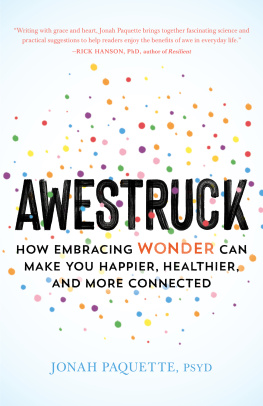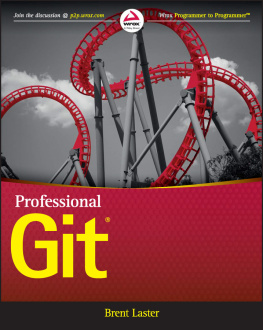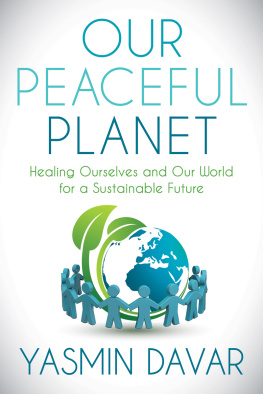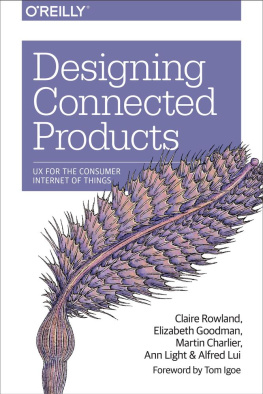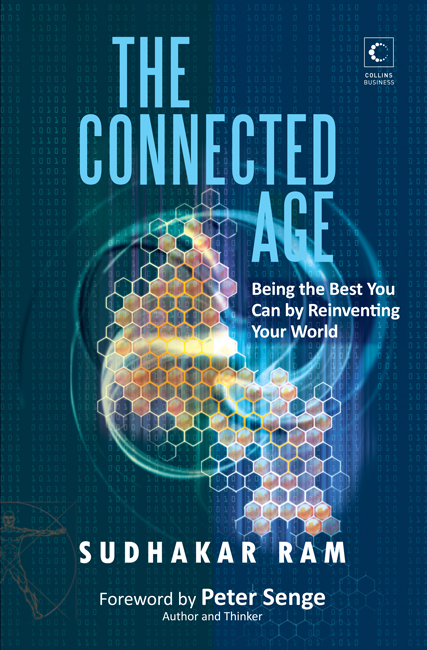
The Connected Age
Being the Best You Can by Reinventing Your World

Sudhakar Ram

I pray for all people to experience their true powerthe power to intend and manifest the well-being of all life on this planet.
Long Live the Earth.
Contents


We live in an age of chaos and breakdown. Fundamental institutions that allow society to functioninstitutions of commerce, education, and governanceare all in an upheaval. Families everywhere are under stress, which is a reflection of the larger turbulence in their societies. Even the most affluent countries are experiencing epidemics of anxiety, depression, suicide, and a whole range of complex social-emotionalphysical disorders. All of this sits against a backdrop of growing ecological stresses and instability. Ever more extreme climate events. Destruction of key ecosystems. Increasing toxins in everyday lifeand the resulting explosion of diseases like cancer, diabetes, and asthma. Clearly, modern societies are moving along a path that will not continue unless we learn to address what Otto Scharmer calls the three divides: the divide between human and nature; between human and human; and between our small s (ego) self and our large S (true nature) Self.
In a sense, you could call this the era of profound confusion. We all know that more material possessions do not lead to happiness, yet en masse we pursue unending growth in consumption. We all know that our well-being is inextricably tied to the health of the larger natural systems within which we live, yet to date our response to the accelerating decline in key ecosystems around the world is woefully inadequate. We all know that relationships define our lives and sense of well-being, yet we study and work in institutions like schools and businesses driven by competition among individuals. As a student recently expressed poignantly: We are more and more connected and yet more and more separate.
Behind the confusion sits a profound paradox. Despite our extraordinary technological prowess, a deep fatalism has become pervasive. Despite frequent denial, we are increasingly aware of the profound imbalances that literally put our survival at risk, and yet we mostly act as if we are impotent to reverse them.
However, amidst the breakdowns and confusion, we do not have to look very far to see extraordinary examples of human creativity. By creativity, I do not only mean new technologies but also the collective realization of new institutions, often in the midst of great difficulties. Social enterprises are emerging everywhere in the world to address pressing public issues with the discipline of well-managed businesses. Indeed, more and more young people are emerging from business and engineering schools and moving straightaway to form such enterprises rather than pursue the beaten track to a job in a big company. A quiet revolution in education is happening around new visions of what children are capable of and the power of adults and children truly learning and growing together. Arising everywhere are community organizations that do amazing workusually with very little resourcesfor ecological restoration, youth at risk, the disabled, the poor, the elderly, and other issues on societal margins. In the world of business, where I have spent most of my time over several decades, more and more are pushing the envelope to collaborate in growing networks within and across industries, and even sectors, to address deep systemic issues like unsustainable global food systems, material waste and toxicity, and new models of development.
I have come to believe that these are all examples of a larger, global artistic movement in re-creating the systems that shape our lives. Around the world, people are realizing new ways of organizing, managing, governing, educating, and caring for one another. Seeing this as an artistic movement underscores the entwined outer and inner aspects: the new products, processes, and ways of organizing but also new ways of thinking and being, the source of all artistic movements. It also draws attention to the fact that no one is in control. There are as many leaders as there are innovators embodying the guiding sensibilities of wholeness and the quest for well-being. In short, this movement is about the art of how we live together as influenced by the institutions that shape that living, and it is being led by countless managers, teachers, community organizers, and private and public sector officials who shape these institutions.
We are all swimming in the same river, but this is only evident when we reflect on the river and not just our own individual canoe or raft which is exactly what this new book by Sudhakar Ram has helped me to do. Ram is a powerful example of the reflective practitioner, a person deeply immersed in the practical realities of the world and simultaneously thinking deeply about the larger needs of society. Such people, in my experience, can make unique contributions to help us all understand the inner and outer choreography of real systemic change. When they present ideals, they naturally balance these with pragmatic methods. When they articulate new visions, they also talk about new infrastructures needed to realize those visions. They deeply grasp the generative power of people committed to a cause, but they equally grasp the need to align resources with that cause. This is one reason I find this book so interestinga book about transforming Industrial Age thinking and practices over the coming decades written by a manager working to do just that amidst the day-to-day pressures of managing a successful company.
There is little doubt that India and China will shape the twenty-first century. These two giants are awakening to become dominant economic powers. But how and to what will they awaken? Just as the Western worldview came to dominate from the seventeenth to the twentieth century, the coming century and beyond will be shaped by how Asian societies think and act. Will they be merely Eastern versions of Western consumerism? That would be the popular view, and the one that most fits the facts of the past twenty years of their accelerated material development. But Sudhakar Ram presents a different view, one that I share. He argues that India is well positioned to leapfrog the reductionism and materialism of the West just as it leapfrogs technologies and infrastructures like telephone poles, top-driven businesses, and teacher-centric classrooms.
But, of course, for this to happen, there will need to be compelling visions of alternatives to business as usual. I believe these visions, the only real antidote to fatalism, are arising around the world, and I believe that Rams Connected Age may prove to be one of the most catalytic.
Peter Senge
Author of The Fifth Discipline
Co-author of Presence, Schools that Learn,
and The Necessary Revolution
Cambridge, Massachusetts

Every one of us has the ability and resources to make our planet a much better placenot only for ourselves, our families, and our communities but for all life on Earth. Yet we live in an era of environmental degradation, political uncertainty, and economic fluctuationsa world where almost all of us feel powerless and ill-equipped to actually make things better.
Next page



